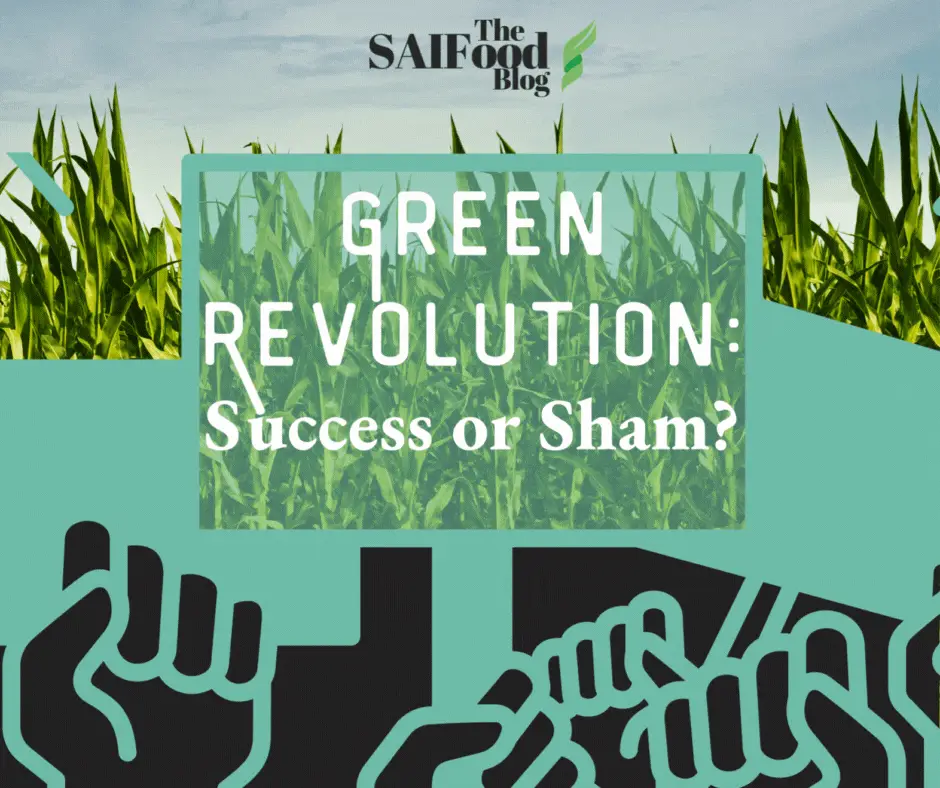
Evidence of Green Revolution success
These activists ignore the fact that new wheat varieties developed by Norman Borlaug saved millions of people from starving to death, especially in India. Dr. Borlaug’s wheat is still to this day revered for “reversing the food shortages that haunted India and Pakistan in the 1960s”. While it was not easy for him to convince the locals of his development program of higher-yielding, disease resistant cereal crops that were well suited for humid climates, rather than their Indigenous crops that were not adopted to meet the local food demands or changing environmental pressures, such as stem rust and drought-like conditions.
Fortunately, evidence easily refutes the misinformation spread by such activists’ claims. Wheat yields rose dramatically in the late 1960s and throughout the 1970s. By lying to their audience and the public, these groups are ignoring that wheat yields in India more than doubled between the period of 1967 and 1972.
Norman Borlaug was able to develop shorter, higher yielding wheat varieties that were rapidly adopted throughout many food insecure parts of the world. Similarly, wheat production in Mexico dramatically increased between 1972 and 1976. Wheat production increased during these periods from the higher yielding varieties that were developed, but also through improved understanding of the importance of fertilizer applications. Governments were able to import greater volumes of fertilizer, arrange for it to be distributed throughout the country, and allow farmers to increase the amount of essential crop nutrients applied to their fields.

There’s no “new research” as claimed by the above activist headlines. The evidence is clear: the Green Revolution resulted in higher crop yields that contributed to preventing one billion deaths from starvation. Dr. Borlaug made an amazing contribution to improving global food security. In 1970, he was awarded the Nobel Peace Prize for his work.
Why are activists lying?
As I see it, activists who are opposed to the commercialization of specific innovative crop varieties, are often in favour of small-scale organic crop production. Now, there is nothing wrong with this, but if the goal is to be high yielding or address specific crop needs, small-scale organic production is only able to produce more food by using more land, as illustrated below by the Organisation for Economic Cooperation and Development. In the early 1960s, at the start of the Green Revolution, coupled with increased fertilizer use and more efficient pesticide use, crop yield increases were decoupled from increased land use.

Many academics and activists who aren’t connected with agricultural production romanticize historic food production practices, such as organic production, due to the lack of synthetic fertilizer and chemical input use. For organic yields to feed the current population, they would need to be 30% above conventional agriculture. However, current organic yields average 30% below conventional agriculture. Activists argue that the increased costs of improved seed, fertilizer and chemicals reduce farm incomes, but there is no evidence to support this. Farmers are efficient business operators and would not continue to use technologies that reduce their profitability. Given that increased use of innovative crops, fertilizer and chemicals has been witnessed over the past 60 years, they benefit all farmers, as if they did not, farmers would have rejected them.
The truth vs Activists Misinformation
These activists are politically opposed to well-known safe, beneficial innovations that have significantly contributed to increasing crop production, such as genetically modified (GM) crops, which increased yields by 22% for the period of 1996-2013. Robust academic research over the past 20+ years has confirmed that in every instance that a GM variety has been commercialized, yields have increased, as demonstrated in these examples: eggplant (19.6%); cotton (24%); papaya (16-77%); soybeans (57%); and corn (5.6-24.5%). Activists pray on the lack of public knowledge about modern food production practices, such as chemical and fertilizer use or Gm crops, attempting to discredit science and to foster heightened levels of society mistrust in science and innovation. There is a rampant spread of false, misleading information throughout social media platforms deliberately designed to undermine society’s confidence in science.
Environmentalists and academic activists have developed a comprehensive system to deliberately spread false information about the safety and benefits of biotechnology and have been doing so for 25 years. These activists have created a business model to share false information about safe technologies that increase food production. This is a cyclical model, whereby when the activists knowingly spread false information to scare and mislead the public, this generates donations to their organizations, which is then used to lobby politicians and policy makers to ban higher yielding and environmentally sustainable GM crops.
What can be done?
Innovations over the past 60 years have improved food production, which all started with the initial successes of the Green Revolution in the 1960s. These innovations provide higher yielding, safe-to-consume crops that benefit the farmers growing the crops and all consumers. The easiest way to ensure that more farmers are able to grow higher yielding crop varieties is to stop donations to environmental non-governmental organizations (ENGOs). The leading international ENGOs have lengthy histories of advocating to prevent the commercialization of higher yielding crops, including Greenpeace, which has worked for 25 years to prevent the commercialization of a rice variety that contributes to reducing childhood blindness. In this instance, Greenpeace is preventing nutrition and contributing to the rate of childhood blindness.
The deliberate spread of false and misleading information by eNGO activists is a significant threat to the ability to reduce global food insecurity. Food insecurity can be reduced through innovation, and could be the timely solution numerous populations around the globe need in addressing their food production limitations. If innovation fails to flourish, food production will not increase. Stopping the spread of false information is equally important to successful innovations.





